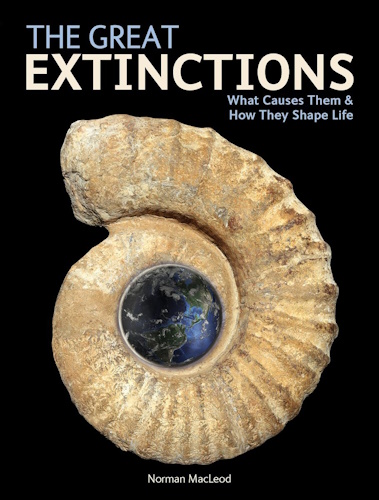

The Great Extinctions: What Causes Them and How They Shape Life

Population sizes of vertebrate species -- mammals, birds, reptiles, amphibians, and fish -- have declined by 52 percent over the last 40 years. in other words, those populations around the globe have dropped by more than half in fewer than two human generations. -- World Wildlife Fund Living Planet report 2014
This book straddles an awkward boundary between being a colorful popular work and a scientific literature review.... Profusely and beautifully illustrated with figures, maps, charts, and period reconstructions. Recommended. -- Choice
A good introduction to the great puzzle that is extinction study. -- Publishers Weekly
Selected by the Scientific American Book Club and now a more affordable paperback for a far-wider audience.
For more than a century scientists have tried to identify and understand the precise processes responsible for species extinction. Solving the species extinction puzzle has become even more important, even urgent, as human populations and technologies rival sea-level change, volcanic eruptions and asteroid impacts as an extinction mechanism.
The Great Extinctions explores the search for an understanding of Earth's five great extinction events and whether the sixth is upon us already. Leading paleontologist Norman MacLeod examines the controversies and conclusions and what they mean to the efforts to preserve Earth's biodiversity.
He also reveals how, contrary to popular conception, species extinction is as natural a process as species evolution. Examining extinction over geological time, he compares ancient extinction events and uses them to predict future extinctions.
Featuring the latest scientific evidence on the subject and informative illustrations and diagrams, The Great Extinctions is an easy-to-understand presentation of a complex and controversial subject.
About the Author
Norman MacLeod is Keeper of Palaeontology at the Natural History Museum, London. He studies the origin and maintenance of form in fossil and modern organisms using mathematical models of shape variation. He also creates new mathematical tools for studying plant and animal form and develops systems for automating the identification of species.
Paperback: 208 pages
Publisher: Firefly Books; First Edition edition (January 29, 2015)
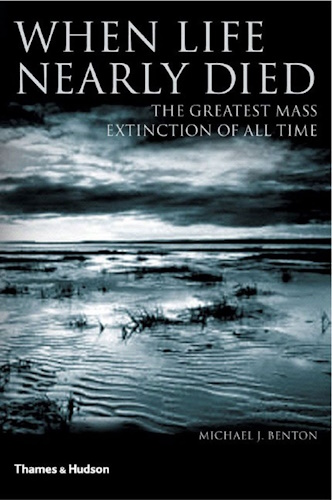

When Life Nearly Died: The Greatest Mass Extinction of All Time

"The focus is the most severe mass extinction known in earth's history….The science on which the book is based is up-to-date, thorough, and balanced. Highly recommended." —Choice
Today it is common knowledge that the dinosaurs were wiped out by a meteorite impact 65 million years ago that killed half of all species then living. Far less known is a much greater catastrophe that took place at the end of the Permian period 251 million years ago: ninety percent of life was destroyed, including saber-toothed reptiles and their rhinoceros-sized prey on land, as well as vast numbers of fish and other species in the sea.
This book documents not only what happened during this gigantic mass extinction but also the recent rekindling of the idea of catastrophism. Was the end-Permian event caused by the impact of a huge meteorite or comet, or by prolonged volcanic eruption in Siberia? The evidence has been accumulating through the 1990s and into the new millennium, and Michael Benton gives his verdict at the end of the volume.
From field camps in Greenland and Russia to the laboratory bench, When Life Nearly Died involves geologists, paleontologists, environmental modelers, geochemists, astronomers, and experts on biodiversity and conservation. Their working methods are vividly described and explained, and the current disputes are revealed. The implications of our understanding of crises in the past for the current biodiversity crisis are also presented in detail. 46 illustrations.
About the Author
Michael Benton is Professor of Vertebrate Paleontology and Head of the Department of Earth Sciences at the University of Bristol. He has written over forty books, many of them standard technical works and textbooks, as well as popular books about dinosaurs and the history of life.
Paperback: 336 pages
Publisher: Thames & Hudson; 1st Pbk. Ed edition (September 1, 2005)
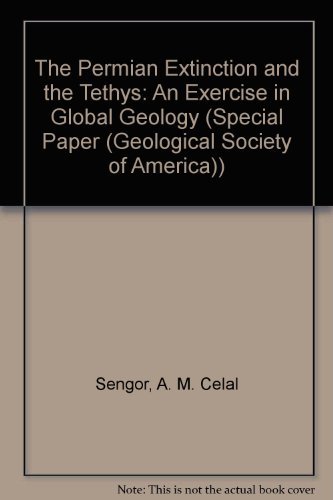

The Permian Extinction and the Tethys: An Exercise in Global Geology

The extinction that wiped out 95% of the living species at the end of the Paleozoic era can be explained by the fact that when it happened, all landmasses were one continent, Pangea, with an inner ocean, the Paleo-Tethys. This ocean included the richest niches in the late Permian world and the extinctions occurred within and around it. Data from the rest of the world indicate that the extinction happened there only where it was polluted by Paleo-Tethyan spills. This book documents this history and shows that the Permian extinction was due to the global geography of the time.
Series: Geological Society of America Special Paper
Paperback: 96 pages
Publisher: Geological Society of Amer (March 15, 2009)
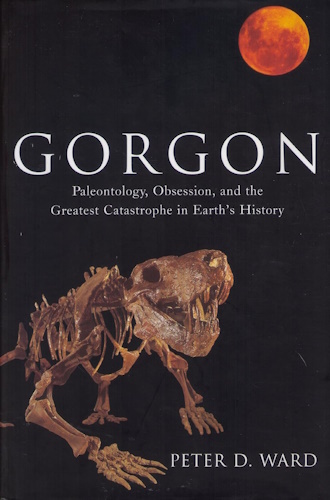

Gorgon: Paleontology, Obsession, and the Greatest Catastrophe in Earth's History

Millions of years before dinosaurs, gorgons roamed the earth. Like a creature out of Greek mythology, the gorgon was a lizard the size of a lion, with a huge head, razor-sharp teeth, reptilian eyes, a long, slashing tail and, perhaps, mammalian hair along with its reptilian scales. Then, almost in an instant, at the end of the Permian period 250 million years ago, the gorgons were gone, along with most other major land and maritime species, both plants and animals. The Permian extinction was greater than the catastrophe that killed off the dinosaurs. Paleontologist Ward (Rare Earth; The End of Evolution; etc.) recounts in this memoir his decade-long search in South Africa's Karoo Desert for clues to the cause of this extinction. By studying the fossil record in the Karoo, Ward concluded, contrary to accepted belief, that the extinction took place simultaneously on land and in the sea, rather than in two stages, and that the gorgon was in essence asphyxiated by a decrease of oxygen in the atmosphere, caused by a series of catastrophes that began with the dropping of sea levels. Some readers may wish Ward had cut to the chase and arrived at his conclusions a chapter or two sooner and focused less on elements of personal memoir, but young people aspiring to be the next Indiana Jones will learn from this realistic account of the quotidian details and battles of fieldwork. 16 pages of b&w photos not seen by PW. Copyright © Reed Business Information, a division of Reed Elsevier Inc. All rights reserved.
Hardcover: 288 pages
Publisher: Viking Adult; 1st edition (January 19, 2004)
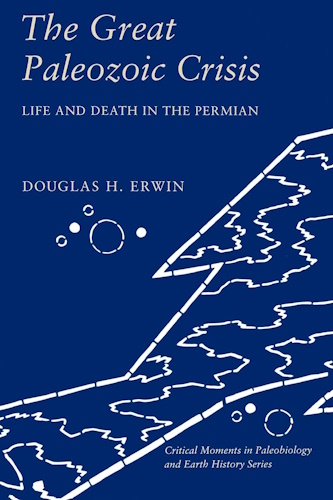

Carefully examines the events recorded at the major Permo-Triassic boundary sections and documents the patterns of extinction and survival among the major groups of marine and terrestrial plants and animals. Erwin also provides a detailed summary of the climatic, geologic, geophysical and geochemical events of the Late Permian and Early Triassic.
Series: The Critical Moments and Perspectives in Earth History and Paleobiology
Paperback: 327 pages
Publisher: Columbia University Press; Reprint edition (April 15, 1993)


Extinction: How Life on Earth Nearly Ended 250 Million Years Ago

Some 250 million years ago, the earth suffered the greatest biological crisis in its history. Around 95% of all living species died out--a global catastrophe far greater than the dinosaurs' demise 65 million years ago. How this happened remains a mystery. But there are many competing theories. Some blame huge volcanic eruptions that covered an area as large as the continental United States; others argue for sudden changes in ocean levels and chemistry, including burps of methane gas; and still others cite the impact of an extraterrestrial object, similar to what caused the dinosaurs' extinction.
Extinction is a paleontological mystery story. Here, the world's foremost authority on the subject provides a fascinating overview of the evidence for and against a whole host of hypotheses concerning this cataclysmic event that unfolded at the end of the Permian.
After setting the scene, Erwin introduces the suite of possible perpetrators and the types of evidence paleontologists seek. He then unveils the actual evidence--moving from China, where much of the best evidence is found; to a look at extinction in the oceans; to the extraordinary fossil animals of the Karoo Desert of South Africa. Erwin reviews the evidence for each of the hypotheses before presenting his own view of what happened.
Although full recovery took tens of millions of years, this most massive of mass extinctions was a powerful creative force, setting the stage for the development of the world as we know it today.
Paperback: 320 pages
Publisher: Princeton University Press (April 21, 2008)
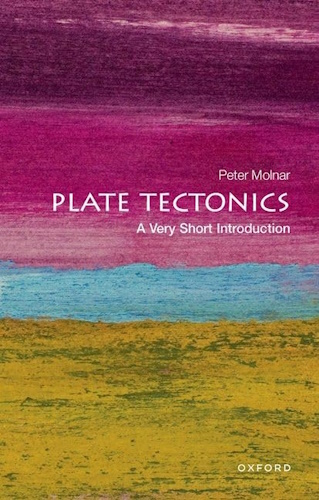

Plate Tectonics: A Very Short Introduction (Very Short Introductions)

The 1960s revealed a new and revolutionary idea in geological thought: that the continents drift with respect to one another. After having been dismissed for decades as absurd, the concept gradually became part of geology's basic principles. We now know that the Earth's crust and upper mantle consist of a small number of rigid plates that move, and there are significant boundaries between pairs of plates, usually known as earthquake belts.
Plate tectonics now explains much of the structure and phenomena we see today: how oceans form, widen, and disappear; why earthquakes and volcanoes are found in distinct zones which follow plate boundaries; how the great mountain ranges of the world were built. The impact of plate tectonics is studied closely as these processes continue: the Himalaya continues to grow, the Atlantic is widening, and new oceans are forming. In this Very Short Introduction Peter Molnar provides a succinct and authoritative account of the nature and mechanisms of plate tectonics and its impact on our understanding of Earth.
ABOUT THE SERIES:
The Very Short Introductions series from Oxford University Press contains hundreds of titles in almost every subject area. These pocket-sized books are the perfect way to get ahead in a new subject quickly. Our expert authors combine facts, analysis, perspective, new ideas, and enthusiasm to make interesting and challenging topics highly readable.
About the Author
Peter Molnar is a Professor of Geological Sciences in the Department of Geological Sciences at the University of Colorado.
Series: Very Short Introductions
Paperback: 152 pages
Publisher: Oxford University Press; 1 edition (May 1, 2015)
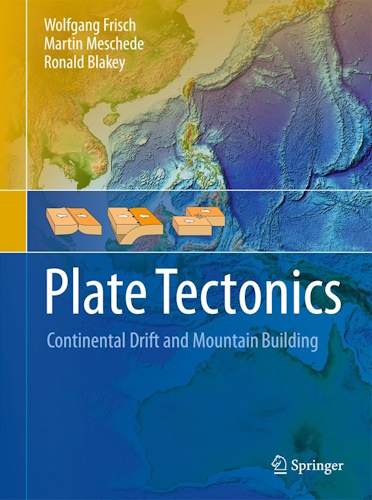

Plate Tectonics: Continental Drift and Mountain Building

How are mountains formed? Why are there old and young mountains? Why do the shapes of South America and Africa fit so well together? Why is the Pacific surrounded by a ring of volcanoes and earthquake prone areas while the edges of the Atlantic are relatively peaceful?
Frisch and Meschede and Blakey answer all these questions and more through the presentation and explanation of the geo-dynamic processes upon which the theory of continental drift is based and which have lead to the concept of plate tectonics.
Hardcover: 212 pages
Publisher: Springer; 2011 edition (December 22, 2010)
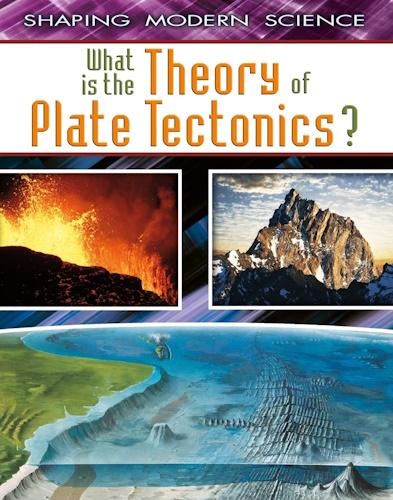

What Is the Theory of Plate Tectonics? (Shaping Modern Science)

In 1912, German meteorologist Alfred Wegener published his groundbreaking theory of continental displacement. His theory proposed that the continents were once a single land mass but had slowly moved apart over millions of years. This book examines the scientific process behind Wegener's theory and how it challenged prevailing views of the time.
Series: Shaping Modern Science (Book 6)
Paperback: 64 pages
Publisher: Crabtree Publishing Company; 1 edition (February 28, 2011)
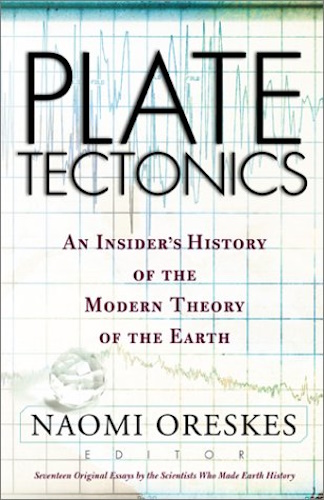

Plate Tectonics: An Insider's History Of The Modern Theory Of The Earth

Can anyone today imagine the earth without its puzzle-piece construction of plate tectonics? The very term, "plate tectonics," coined only thirty-five years ago, is now part of the vernacular, part of everyone's understanding of the way the earth works.The theory, research, data collection, and analysis that came together in 1967 to constitute plate tectonics is one of the great scientific breakthroughs of the 20th century. Scholarly books have been written about tectonics, but none by the key scientists-players themselves. In Plate Tectonics , editor Naomi Oreskes has assembled those scientists who played key roles in developing the theory to tell - for the first time, and in their own words - the stories of their involvement in the extraordinary evolution of the theory.The book opens with an overview of the history of plate tectonics, including in-context definitions of the key terms that are discussed throughout the book. Oreskes explains how the forerunners of the theory, Wegener and du Toit, inspired how scientists working at the key academic institutions - Cambridge and Princeton Universities, Columbia University's Lamont Doherty Geological Observatory, and the University of California-San Diego's Scripps Institute of Oceanography – competed and collaborated until the theory coalesced in 1967.
Hardcover: 448 pages
Publisher: CRC Press; 1 edition (January 15, 2002)
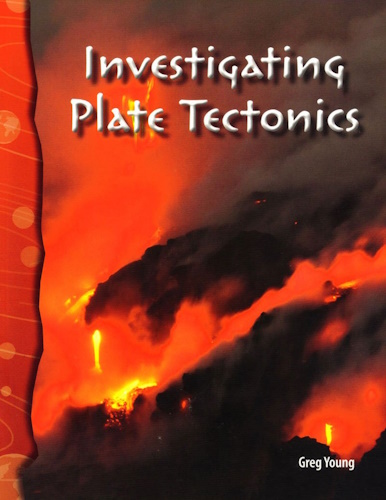

Investigating Plate Tectonics: Earth and Space Science (Science Readers)

In this adventurous title, readers learn all about plate tectonics! A brief history of Alfred Wegener's theory of continental drift introduces readers to the development of plate tectonics and how it helped form the Earth we know today. Through colorful images, helpful charts and graphs, and easy-to-read text, readers will discover such fascinating topics as magnetic pole reversal, divergent and convergent plate boundaries, the ocean-continental division, and the San Andreas Fault. A captivating lab activity is featured to encourage children to further explore geology!
About Shell Education
Rachelle Cracchiolo started the company with a friend and fellow teacher. Both were eager to share their ideas and passion for education with other classroom leaders. What began as a hobby, selling lesson plans to local stores, became a part-time job after a full day of teaching, and eventually blossomed into Teacher Created Materials. The story continued in 2004 with the launch of Shell Education and the introduction of professional resources and classroom application books designed to support Teacher Created Materials curriculum resources. Today, Teacher Created Materials and Shell Education are two of the most recognized names in educational publishing around the world.
Series: Science Readers
Paperback: 32 pages
Publisher: Teacher Created Materials; 1 edition (September 21, 2007)
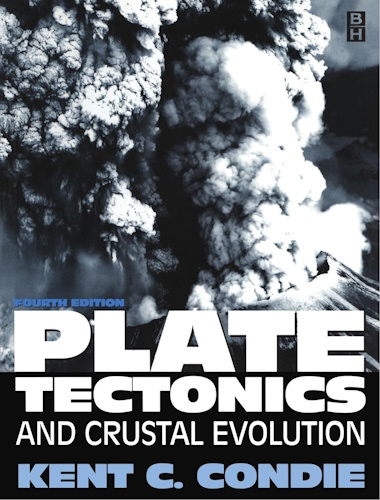

Plate Tectonics, Fourth Edition

This comprehensive text has established itself over the past 20 years as the definitive work in its fields, presenting a thorough coverage of this key area of structural geology in a way which is ideally suited to advanced undergraduate and masters courses. The thorough coverage means that it is also useful to a wider readership as an up to date survey of plate tectonics.
The fourth edition brings the text fully up to date, with coverage of the latest research in crustal evolution, supercontinents, mass extinctions. A new chapter covers the feedbacks of various Earth systems. In addition, a new appendix provides a valuable survey of current methodology.
Paperback: 288 pages
Publisher: Butterworth-Heinemann; 4 edition ( 30, 1997)
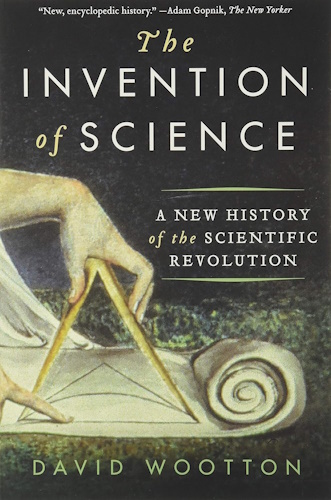

The Invention of Science: A New History of the Scientific Revolution

From the Back Cover
Before 1492, all significant knowledge was believed to be already available; there was no concept of progress, as people looked to the past, not the future, for understanding. David Wootton argues that the discovery of America demonstrated new knowledge was possible: indeed, it introduced the very concept of discovery and opened the way to the invention of science.
The first crucial discovery was Tycho Brahe’s nova of 1572: proof that there could be change in the heavens. The invention of the telescope in 1608 rendered the old astronomy obsolete. Evangelista Torricelli’s experiment with the vacuum, in 1643 directly led to the triumph of the experimental method used in the Royal Society by Robert Boyle and Isaac Newton. By 1750, Newtonianism was being celebrated throughout Europe.
This innovative science relied on a new understanding of what knowledge may be, and with this came a fresh language: discovery, progress, fact, experiment, hypothesis, theory, and laws of nature. Although almost all these terms existed before 1492, their meanings were radically transformed, and they became tools to think scientifically. Now we all speak this language of science that was invented during the Scientific Revolution.
The new culture led to a new rationalism, repudiating alchemy, astrology, and the belief in witchcraft. It also led to the invention of the steam engine and to the first Industrial Revolution. Wootton’s landmark work changes our understanding of how this great transformation came about, and of what science is.
Paperback: 784 pages
Publisher: Harper Perennial; Reprint edition (December 13, 2016)
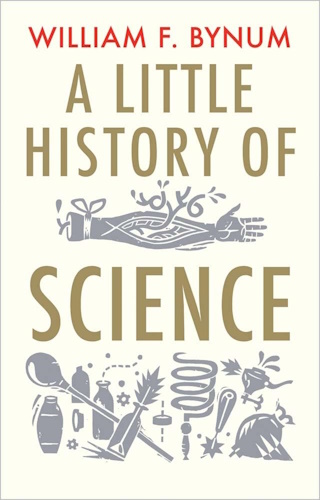

Science is fantastic. It tells us about the infinite reaches of space, the tiniest living organism, the human body, the history of Earth. People have always been doing science because they have always wanted to make sense of the world and harness its power. From ancient Greek philosophers through Einstein and Watson and Crick to the computer-assisted scientists of today, men and women have wondered, examined, experimented, calculated, and sometimes made discoveries so earthshaking that people understood the world—or themselves—in an entirely new way.
This inviting book tells a great adventure story: the history of science. It takes readers to the stars through the telescope, as the sun replaces the earth at the center of our universe. It delves beneath the surface of the planet, charts the evolution of chemistry's periodic table, introduces the physics that explain electricity, gravity, and the structure of atoms. It recounts the scientific quest that revealed the DNA molecule and opened unimagined new vistas for exploration.
Emphasizing surprising and personal stories of scientists both famous and unsung, A Little History of Science traces the march of science through the centuries. The book opens a window on the exciting and unpredictable nature of scientific activity and describes the uproar that may ensue when scientific findings challenge established ideas. With delightful illustrations and a warm, accessible style, this is a volume for young and old to treasure together.
About the Author
William Bynum is professor emeritus, history of medicine, University College London. He is author or editor of numerous publications, including most recently Great Discoveries in Medicine. He lives in Suffolk, UK.
Paperback: 272 pages
Publisher: Yale University Press; Reprint edition (September 10, 2013)
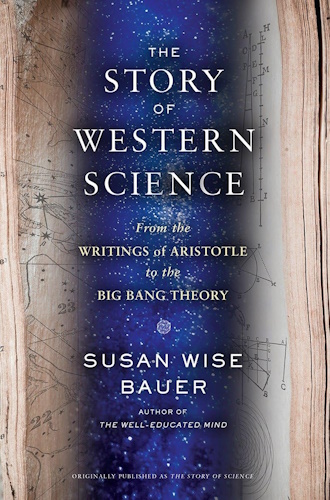

The Story of Western Science: From the Writings of Aristotle to the Big Bang Theory

A riveting road map to the development of modern scientific thought.
In the tradition of her perennial bestseller The Well-Educated Mind, Susan Wise Bauer delivers an accessible, entertaining, and illuminating springboard into the scientific education you never had. Far too often, public discussion of science is carried out by journalists, voters, and politicians who have received their science secondhand. The Story of Western Science shows us the joy and importance of reading groundbreaking science writing for ourselves and guides us back to the masterpieces that have changed the way we think about our world, our cosmos, and ourselves.
Able to be referenced individually, or read together as the narrative of Western scientific development, the book's twenty-eight succinct chapters lead readers from the first science texts by Hippocrates, Plato, and Aristotle through twentieth-century classics in biology, physics, and cosmology. The Story of Western Science illuminates everything from mankind's earliest inquiries to the butterfly effect, from the birth of the scientific method to the rise of earth science and the flowering of modern biology.
Each chapter recommends one or more classic books and provides entertaining accounts of crucial contributions to science, vivid sketches of the scientist-writers, and clear explanations of the mechanics underlying each concept. The Story of Western Science reveals science to be a dramatic undertaking practiced by some of history's most memorable characters. It reminds us that scientific inquiry is a human pursuit―an essential, often deeply personal, sometimes flawed, frequently brilliant way of understanding the world.
The Story of Western Science is an "entertaining and unique synthesis" (Times Higher Education), a "fluidly written" narrative that "celebrates the inexorable force of human curiosity" (Wall Street Journal), and a "bright, informative resource for readers seeking to understand science through the eyes of the men and women who shaped its history" (Kirkus).
Previously published as The Story of Science.
13 illustrations
About the Author
Susan Wise Bauer is a writer, educator, and historian. Her previous books include the Writing With Ease, Writing With Skill, and Story of the World series from Well-Trained Mind Press, as well as The Well-Trained Mind: A Guide to Classical Education at Home, The Well-Educated Mind: A Guide to the Classical Education You Never Had, Rethinking School, The Story of Western Science: From the Writings of Aristotle to the Big Bang Theory, and the History of the World series, all from W. W. W. Norton. She has a Ph.D. in American Studies from the College of William & Mary in Virginia, as well as an M.A. in seventeenth-century literature and a Master of Divinity in Ancient Near Eastern Languages and Literature. For fifteen years, she taught literature and composition at the College of William and Mary.
Hardcover: 336 pages
Publisher: W. W. Norton & Company; 1 edition (May 11, 2015)
![]()
![]()